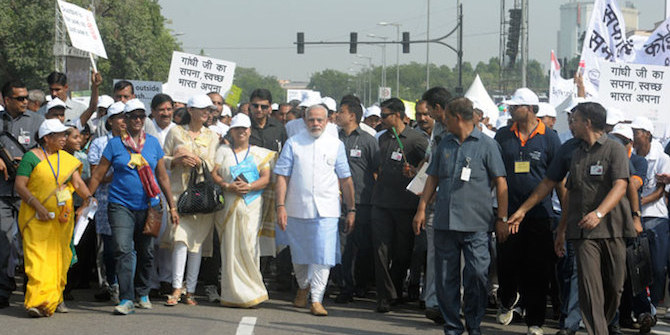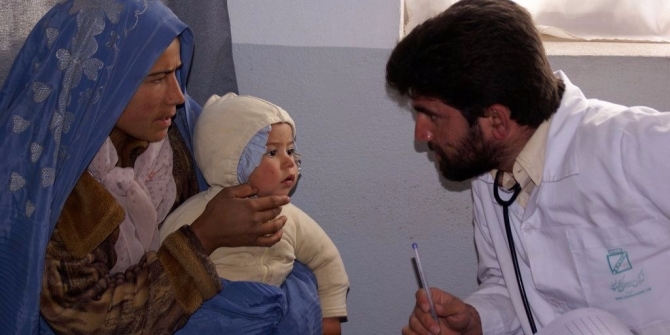Arundhati Ghosh proposes options for sustaining arts and culture organisations in India.
With collapsing multinationals, crumbling financial structures, and trembling social edifices, we are at a terribly uncertain time in the world. And yet, like in any other turbulent time in history, we are making more art than ever before. Working for the India Foundation for the Arts (IFA) – the only independent, not-for-profit, national grant-making body in the arts and culture in India – I suddenly sense an energy that has taken the country by storm. Artists and cultural practitioners across the board are writing, performing, and making work that is challenging and reflective, exploring life, living and beyond. And if during calmer times it was difficult to find support to sustain this energy in a country like India, which suffers from myriad social and economic inequalities, at times like this it is tougher still.
The landscape of arts funding in India could not be grimmer. The Ministry of Culture, which still is the largest funder, spends only 70 per cent of its allocated budget each year, not for the lack of deserving projects, but for its refusal to change its programming and modes of operation in keeping with the changing needs and aspirations of the arts world. International foundations such as the Ford Foundation, which used to have a strong arts and culture programme in India, have axed their culture funds at the first sight of financial stress, keeping alive only those areas of their work that directly and measurably affect socio-economic plight. Even large Indian funders like the Tata Group have started looking at culture through a developmental lens, leaving absolutely no space for creative, experimental, and risk-taking arts practices. Corporations only support art forms that help them build a certain image for their brands while bilateral agencies, embassies, consulates, and cultural arms of countries that have diplomatic relations with India still form a very small percentage of the supporters for the arts. In this context, organisations like the IFA, which has to mobilise its own resources to make grants to the arts world, are no better placed than the artists they serve. So where do arts and culture organisations look and what strategies must they adopt to sustain and fuel the surge of creative energies in India today?
To quote Alice Walker, “hard times require furious dancing”. And furious dancing is what arts and culture organisations and collectives will have to do to thrive in this scenario. Let me share my own observations and understanding of what our possible ‘moves’ could be.
I am a great believer in the individual donor. If one considers global philanthropy in recent years, one sees a rise in individual giving across various causes, including the arts. There may be many reasons for this trend, including a growing mistrust of corporate giving, wariness about the way public funds are managed and disbursed, disappointment with organisational funding as well as a rise in societal responsibility that individual citizens feel. Whatever the reasons, the individual donor is emerging as a key supporter and partner of the not-for-profit sector, including the arts. Albeit at a slower pace, this has begun to happen in India too. This is true not only of high net-worth individuals capable of giving large sums but also of people from the middle and upper-middleclass who have started donating smaller amounts. I believe this is where the future of resource mobilisation lies in India for the arts and culture sector. Especially at times as uncertain as these, an individual’s passion for the arts will always override organisational caution with respect to giving.
The second way forward, I believe, lies in collaborations and partnerships. Gone are the days of mammoth, monolithic organisations determining their own programmes and working in isolation. This is the time for groups and collectives to work together to pool their ideas and resources, share experiences, and build networks thus making every rupee work harder and longer for them.
Finally, in a world where the space for the arts is constantly shrinking, I believe organisations must become more nimble and guerrilla-like in their approach to resource mobilisation. They must stop depending solely on grants and donations and build internal capacities to generate incomes for themselves, thus further diversifying their sources of sustenance. The skill-sets artists possess, which they may believe to be intrinsic to their practice, are of great relevance to other fields, including the corporate and education sector. What one needs are arts managers who can facilitate groups to transform this relevance to services of value thereby bringing in a steady income that can then support the core artistic work of groups.
Myriad uncertainties notwithstanding, these are exciting times for the arts in India. And as I conclude this post, I can already see the rest of my calendar year abuzz with activity, which includes the first-ever biennale in India at Kochi, various film festivals across the country, the first literature festival in my own city Bangalore, and much more. Here’s to more furious dancing for the arts and culture fraternity in India.
Arundhati Ghosh was a Chevening Gurukul Scholar at the London School of Economics in 2005 and is currently the Deputy Director at India Foundation for the Arts.
Photo credit: Logo of the India Foundation for the Arts.








